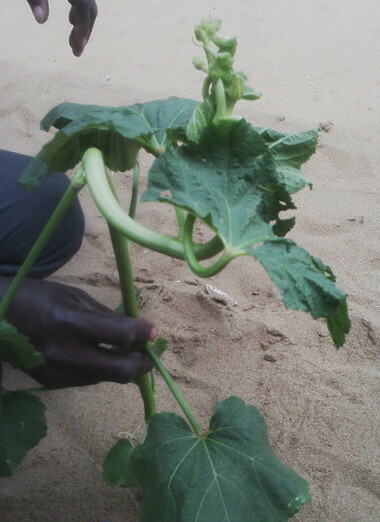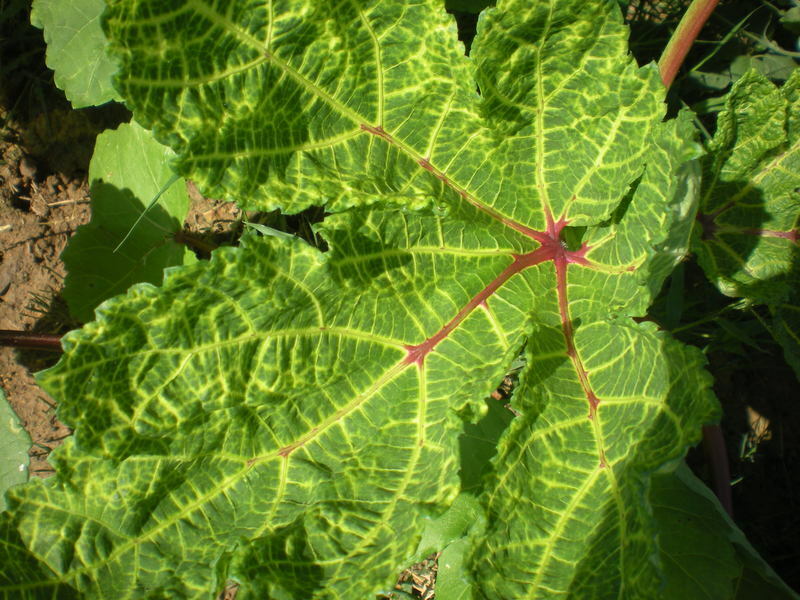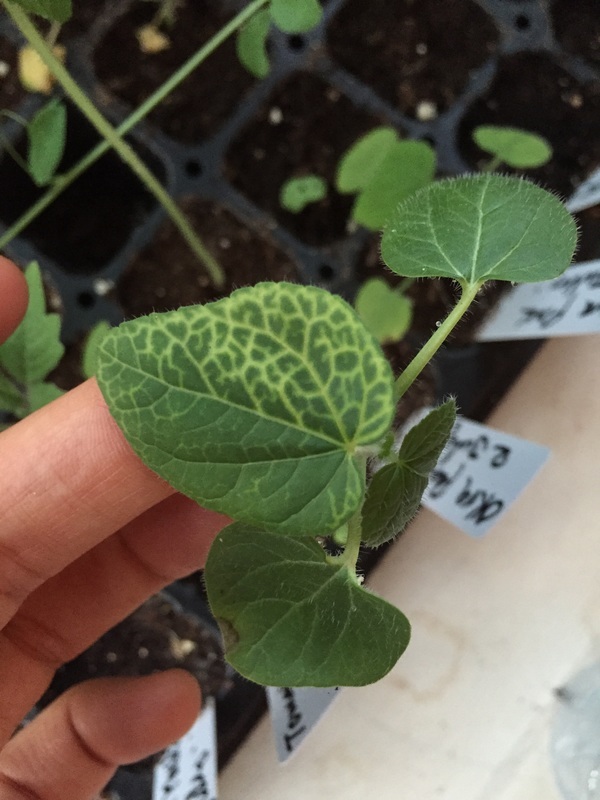Okra
Scientific Clarification
The following are the crop details for Okra:
Scientific name: Abelmoschus esculentus
Local names: Bamia, Binda (Swahili)
Order: Malvales
Family: Malvaceae
Genus: Abelmoschus
General Information
Okra, also known as lady's fingers, is mainly grown for its young immature pods, which are consumed as a vegetable, raw, cooked, or fried. It is a common ingredient in soups and sauces. The pods can be conserved by drying or pickling. The leaves are sometimes used as spinach or cattle feed, the fibers from the stem for cord, the plant mucilage (thick gluey substance) for medical and industrial purposes, and the seeds as a substitute for coffee. Okra seeds contain a considerable amount of good-quality oil and protein.
Okra plants have small erect stems that can be bristly or hairless with heart-shaped leaves. The leaves are 10–20 cm (4–8 in) long with 5–7 lobes The plant produces flowers with five white to yellow petals which are 4–8 cm (1.6–3.1 in) in diameter. The seed pod is a capsule up to 25 cm (10 in) long, containing numerous seeds. Okra can grow 1.2–1.8 m (4–6 ft) tall and as an annual plant, survives only one growing season.
It is believed to have originated in Ethiopia but is also particularly popular in India, West Africa, and Brazil.
Okra Varieties in Kenya
Pusa sawani: High-yielding variety tolerant to vein mosaic. It grows 2 to 2.5 m tall and has long pods. (18 to 20 cm), dark green, smooth, and has 5 ridges. Mainly for export.
Clemson spineless: 1.2 to 1.5 m tall. Pods are about 15 cm long, green, and moderately ridged.
Green Emerald2: This variety is about 1.5 m tall. Pods are 18 to 20 cm long, slightly ridged (rounded), and green.
White velvet: A medium-tall variety of 1.5 to 1.8 m high. Pods are 15 to 18 cm long, slender, tapered, smooth, and creamy white.
Dwarf Green Long Pod: It grows up to 0.9 m high. It has several side branches. The pods are angular and green and about 18 to 20 cm long.
Okra Varieties in India
Pusa Makhmali: Variety produces light green fruits.
Punjab no. 13: Suitable for cultivating in the spring-summer season. Fruits are light green, 5-ridged and of medium length.
Punjab Padmini: Fruits are quick growing, dark green, hairy, 5-ridged, and remain tender for a longer period. Matures within 55-60 days after sowing.
Parbhani Kranti: Fruits are medium-long with tender smooth surfaces at the marketable stage. Fruits have a good keeping quality. The average yield is 8.5-11.5 t/ha in 120 days.
Arka Anamika: Fruits are borne in two flushes. During the first flush, the fruits are borne on the main stem 45-50 days after sowing. During the second flush, the fruits are borne on short branches, which sprout from the middle portion of the main stem. Fruits are spineless with 5-6 ridges, delicate aroma, and good keeping quality.
Climatic Conditions, Soils, and Water Management
Okra is grown at elevations ranging from sea level to 1600 m. The optimum temperatures for the growth and production of high-quality pods range between 24 and 30°C. The crop is sensitive to frost and temperatures below 12°C.
Okra will grow on a wide range of soils, but it prefers soils high in organic matter. The seeds perform well on fertile, well-drained loamy soil. When the soil fertility level is low, organic manure, fertilizer, or compost can be applied to improve soil productivity. it must be frequently fertilized in sandy soils, as soluble nutrients readily leach from the root zone. Its optimum range of soil pH is between 5.8 and 6.5. A soil test will indicate if lime is required to adjust the pH and the amount to apply. If lime is recommended, dolomite should be used and applied 3 to 4 months before the crop is seeded. Okra is sensitive to salinity. Okra can grow in a wide range of rainfall regimes but needs 400 mm of water for the growing period of about 3 months.
Uses
Okra is mainly consumed as a vegetable and it provides health benefits such as; strengthening bones, lowers blood pressure, prevents constipation and maintains healthy skin.
Planting procedure
Land preparation
Thorough soil preparation 2 to 3 months before planting is recommended to allow crop residues and organic matter in the soil to decompose before okra is planted. Early land preparation also permits weed seeds to germinate and allows early cultivation to destroy young weeds before planting.
Soil management
The crop produces reasonably well on most soil types, although a fertile loam is preferable. Cultivars that are susceptible to root-knot eelworm (Meloidogyne incognita) do not produce a satisfactory crop on infected light or sandy soils. This species tolerates soils that are slightly acidic and will grow successfully in soils with a pH of 6.0-6.8.
Sowing
Okra plants may be established by direct seeding in the field, by growing seedlings in nursery seedbeds, or by raising seedlings in plastic trays. Before planting, it is advisable to soak the okra seeds in water for 24 hours, to break seed dormancy and speed up the germination rate or reduce germination days. In Kenya, okra is sown directly in the field. About 8 to 10 kg of seed is required per hectare. The planting depth is about 1.5 cm.
Spacing varies from 45 x 45 cm, 50 x 30 cm, or 60 x 15 cm between the rows and within the rows, respectively. In some parts of Kenya, okra is planted 2 x 2 m in flood irrigation basins. Spacing of about 1 to 2 feet intra-row and 3 to 4 feet inter-row should be used. The main export season in Kenya is October to May; hence planting should start in July to target this export season. However, with irrigation okra can be grown all year round for the local and off-season export markets.
Field Operations
- Fertilizer application
Before planting, manure or artificial fertilizer has to be mixed well into the top 10 cm of the soil. The uptake of minerals is rather high. When the crop yields 10 t of fresh fruits per hectare, the uptake is 100 kg N, 10 kg P, 60 kg K, 80 kg Ca, and 40 kg Mg. Fertilizer can be given in three split applications, at sowing, after 3 weeks, and again at 6 weeks after sowing.
The general recommendation in Kenya (issued by Horticultural Crops Development Authority) for conventional production (non-organic production) is as follows: well-composted manure should be applied at planting at the rate of 15 to 20 t/ha (17 to 20 gm/plant). It should be mixed thoroughly with the soil in the planting hole.
- Weeding
Okra is harvested over a long period and weed control is important throughout the cropping season. Smallholder growers in Kenya control weeds by hand hoeing.
- Rotation
Okra should be rotated with baby corn, maize, peas, onions, potatoes, fodder grass, or small grains. Being in the same family as cotton it shares the same complex of pests and diseases therefore okra should not be grown before or after cotton.
- Irrigation
Okra is a heavily foliaged crop, so its water requirements are high. According to the Kenya Ministry of Agriculture, okra needs 400 mm of water during the growing season of three months. A general guideline for semi-arid areas, where okra is mostly grown in Kenya, is to provide about 35 mm of water per week (this equals 35 liters of water per square meter). Critical times for irrigating okra are at emergence and from flowering to pod production. Saline or chlorinated water should not be used for irrigation.
Harvesting
Early-maturing cultivars give the first harvest 7 weeks after sowing. A developing fruit should be harvested 7-8 days after flowering. Earlier picking depresses yields because of suboptimal fruit weight. Delayed picking depresses marketable yields because over-aged fruits become fibrous. Therefore, okra fields are harvested at intervals of 2-3 days. For seed production, the whole crop can be harvested at once. As the plant continues to flower, fruits can be picked every 2 days. Picking fruits is usually done manually. Intensive contact with slightly hairy fruits and plants may lead to skin irritation.
Most varieties grown in Kenya are ready to pick 45 to 55 days after planting. Pods are ready for harvesting about 4 to 6 days after flowering. Pods are harvested when still tender and on attaining a length of 7 to 15 cm, depending on variety and market requirements.
Regular picking every 1 to 2 days is essential to ensure pods are within the size prescribed by the market. Okra should not be harvested when it is raining or excessively wet. Excess moisture can induce mold development on the pods and the cut petioles. Okra pods decay quickly; therefore they should be harvested within a day to market.
Harvesting is done by hand. The pods can be snapped off or cut off, leaving a small stalk not longer than one cm. The pods must be handled carefully otherwise they may be bruised and may discolor. It is best to pick pods into a waist bag to reduce skin damage and to avoid excessive bending of the pods. Wearing rubber gloves when harvesting and handling pods is recommended. This will protect the skin from irritating sap produced by the okra plant.
Postharvest Treatment
After harvesting, the fruits can be stored for only 3-5 days at about 10°C; lower temperatures may cause damage to the fruits. Okra should not be washed until shortly before use as washing makes the fruit slimy.
Fresh okra can quite easily be transported in bulk and kept for several days without much loss of quality. Dried okra is an important product in West Africa. Some countries have a small canning and freezing industry.
References
Aguair, J. L., McGiffin, M., Natwick, E. & Takele, E. (2011). Okra production in California. UC Vegetable Research and Information Center. Available at: http://anrcatalog.ucdavis.edu/pdf/7210.pdf. [Accessed 24 January 2023].
CABI Crop Protection Compendium. (2008). Abelmoschus esculentus (okra) datasheet. Available at: http://www.cabi.org/cpc/datasheet/1950. [Accessed 24 January 2023].
https://nhb.gov.in/pdf/vegetable/okra/okr011.pdf















